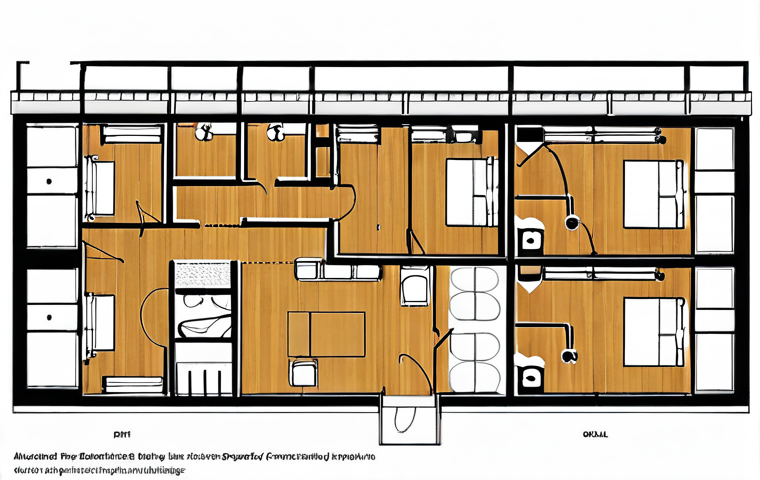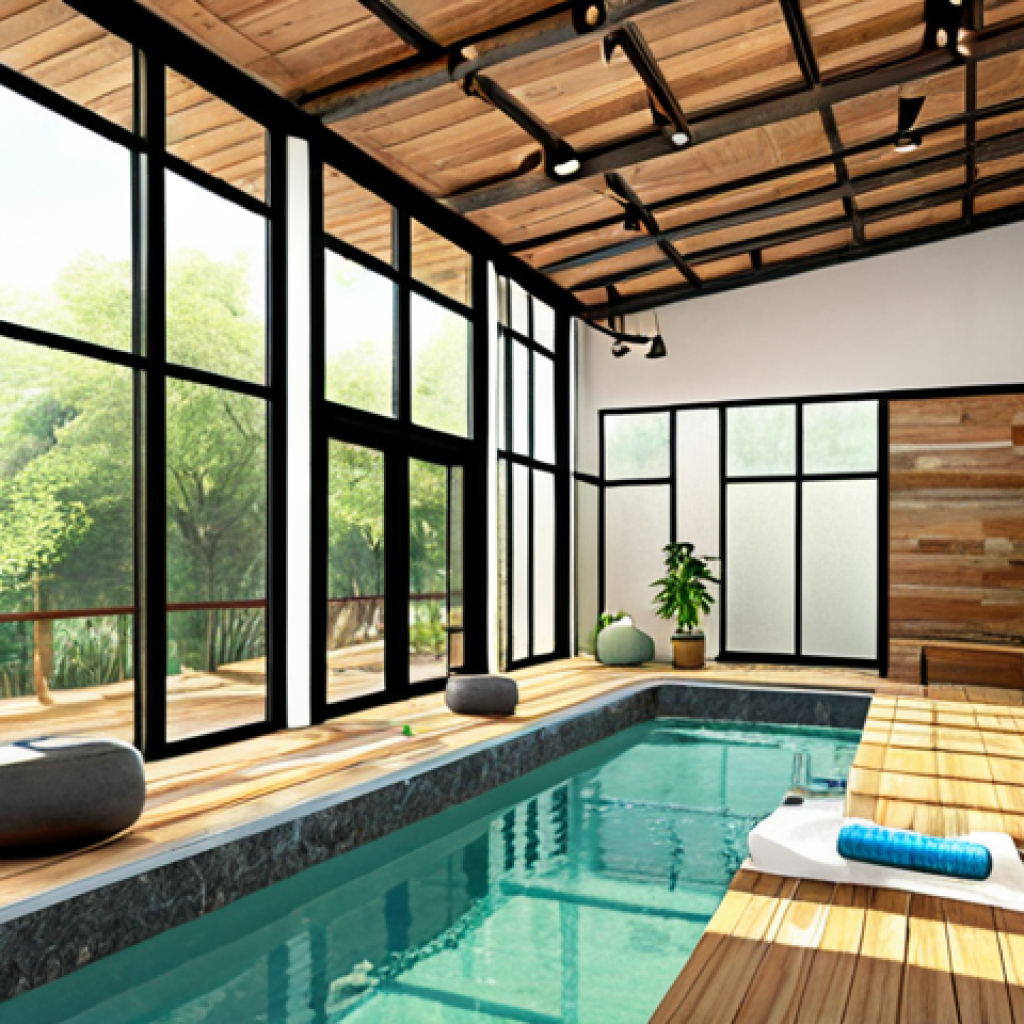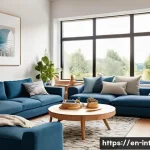So, you’re diving headfirst into the world of interior architecture practical exams? It’s a wild ride, but incredibly rewarding when you finally nail that design and see it come to life.
From my own experience, having the right resources at your fingertips can make all the difference between a stressful scramble and a confident stride through the exam.
In the current climate, staying updated on sustainable design trends and smart home technology is also a must to showcase forward-thinking solutions. Let’s ensure you’re armed with everything you need to succeed.
Let’s break it down and find out more in the article below!
Alright, let’s dive into some crucial resources and strategies to help you ace that interior architecture practical exam!
Crafting a Killer Concept Statement

A concept statement is your architectural North Star, guiding your design decisions. It’s not just a fancy phrase; it’s the essence of your project, encapsulating the core idea, target audience, and intended atmosphere.
1. Define Your Core Idea with Precision
Think deeply about what you want your design to communicate. Is it about maximizing natural light in a compact urban space? Or perhaps creating a serene, nature-inspired environment for a wellness center?
Be specific. For example, instead of saying “sustainable design,” articulate “integrating passive cooling techniques to reduce energy consumption by 40%.” My own experience taught me that a clearly defined core idea acts as a filter, helping you make consistent and purposeful design choices throughout the project.
I remember one exam where the core idea was “adaptive reuse,” and every design decision I made was geared towards honoring the original building’s character while introducing modern functionality.
2. Understand Your Target Audience Intimately
Who are you designing for? A young, tech-savvy professional? A family with small children?
The elderly? Each demographic has unique needs and preferences. Consider accessibility, safety, ergonomics, and aesthetics from their perspective.
During my studies, I volunteered at an assisted living facility, which gave me invaluable insights into the specific design considerations required for elderly residents, such as minimizing fall risks and maximizing visual clarity.
This hands-on experience helped me approach design challenges with empathy and practicality.
3. Visualize the Atmosphere and User Experience
What feeling do you want people to experience when they enter the space? Calm and relaxed? Energized and inspired?
Use descriptive language to evoke the desired atmosphere. Think about lighting, colors, textures, and spatial arrangements. I often create mood boards with images, fabrics, and color swatches to capture the essence of the desired atmosphere.
For a recent project, I wanted to create a “cozy and inviting” atmosphere, so I used warm color palettes, soft textures, and strategically placed ambient lighting to achieve that effect.
Mastering Space Planning and Circulation
Effective space planning and circulation are the backbone of any successful interior design project. It’s about creating functional, intuitive, and aesthetically pleasing layouts that meet the needs of the users.
1. Understand the Principles of Ergonomics
Ergonomics is the science of designing spaces and products to fit the human body. Consider factors like reach, posture, and movement to ensure comfort and safety.
For example, the ideal height for a kitchen countertop is different for someone who is 5’2″ versus someone who is 6’2″. Understanding these nuances is crucial for creating user-friendly spaces.
I once worked on a project where we had to design a workstation for a call center. We conducted extensive ergonomic assessments to determine the optimal desk height, chair adjustments, and monitor placement to minimize strain and maximize productivity.
2. Create Clear and Intuitive Circulation Paths
People should be able to navigate the space easily and naturally. Avoid creating bottlenecks or confusing layouts. Use visual cues, such as lighting and flooring, to guide movement.
I like to use flow diagrams to visualize how people will move through the space. I trace the path a person would typically take through a space, noting all the key interaction points and potential obstacles.
This helps me identify areas where circulation can be improved.
3. Consider the Functional Relationships Between Spaces
Think about how different spaces will be used and how they relate to each other. For example, a kitchen should be located near the dining area, and a bathroom should be easily accessible from the bedrooms.
Create zones that support the intended activities and ensure privacy where needed. When designing a home office, for example, I always consider its proximity to the living areas and bedrooms.
I aim to create a space that is conducive to focused work while minimizing distractions from other household activities.
Material Selection and Sustainable Practices
Choosing the right materials is crucial for both aesthetics and functionality. In today’s world, it’s also essential to consider the environmental impact of your material choices.
1. Research Material Properties and Performance
Understand the characteristics of different materials, such as durability, fire resistance, and acoustic properties. Consider how they will perform over time and in different environmental conditions.
For example, a material that is suitable for an interior wall may not be suitable for an exterior facade. I always consult with manufacturers and suppliers to get detailed information about the properties and performance of their products.
2. Embrace Sustainable and Eco-Friendly Options
Opt for materials that are made from recycled content, are renewable, or have a low environmental impact. Look for certifications like LEED or GreenGuard to ensure that the materials meet certain sustainability standards.
I’ve made it a personal mission to incorporate sustainable materials into my designs whenever possible. This includes using reclaimed wood, recycled glass, and low-VOC paints.
3. Create a Cohesive and Harmonious Material Palette
Choose materials that complement each other and create a visually appealing and functional space. Consider the colors, textures, and patterns of the materials and how they will interact with light.
It’s helpful to create a material board with samples of all the selected materials. This allows you to see how they look together and ensure that they create a cohesive and harmonious aesthetic.
Lighting Design and its Impact
Lighting is not just about illumination; it’s about creating mood, highlighting features, and enhancing the user experience.
1. Understand the Different Types of Lighting
There are three main types of lighting: ambient, task, and accent. Ambient lighting provides overall illumination, task lighting is used for specific activities, and accent lighting is used to highlight architectural features or artwork.
I always start by considering the ambient lighting needs of the space, then add task and accent lighting as needed.
2. Consider the Color Temperature and CRI
Color temperature refers to the warmth or coolness of the light, while CRI (Color Rendering Index) measures how accurately a light source renders colors.
Choose lighting that complements the materials and finishes in the space and creates the desired atmosphere. For example, warm lighting is often used in bedrooms and living rooms to create a cozy and relaxing atmosphere, while cool lighting is often used in kitchens and offices to enhance productivity.
3. Incorporate Natural Light Whenever Possible
Natural light is the most desirable type of lighting. Maximize natural light by using large windows, skylights, and light wells. Consider the orientation of the building and how it will affect the amount of natural light that enters the space.
I always try to design spaces that maximize natural light. Not only does it save energy, but it also improves people’s mood and well-being. Here’s a table summarizing key considerations for material selection:
| Consideration | Details |
|---|---|
| Durability | How long will the material last under normal use? Consider wear and tear, impact resistance, and resistance to moisture or chemicals. |
| Aesthetics | Does the material fit the desired style and atmosphere of the space? Consider color, texture, pattern, and overall visual appeal. |
| Sustainability | Is the material made from recycled content? Is it renewable? Does it have a low environmental impact? Look for certifications like LEED or GreenGuard. |
| Cost | What is the initial cost of the material? What are the long-term maintenance costs? Consider the total cost of ownership. |
The Role of FF&E (Furniture, Fixtures, and Equipment)
FF&E plays a critical role in shaping the functionality and aesthetics of any interior space. Thoughtful selection and arrangement can transform a simple room into a highly functional and visually appealing environment.
1. Prioritize Functionality and Ergonomics
Every piece of furniture should serve a purpose and be comfortable for its intended use. Ergonomics should be a guiding principle, ensuring that items support good posture, reduce strain, and enhance productivity.
For example, when selecting office chairs, look for adjustable features such as lumbar support, seat height, and armrests. When choosing tables, consider the height and surface area needed for the intended tasks.
2. Harmonize Style and Theme
FF&E should complement the overall design theme and style of the space. This includes considering the color palette, materials, and shapes of the furniture.
For a modern space, opt for sleek, minimalist designs with neutral colors. For a more traditional space, choose furniture with ornate details and warm, rich colors.
Creating a mood board with samples of fabrics, finishes, and furniture styles can help ensure a cohesive look.
3. Space Planning and Arrangement
Careful space planning is crucial for maximizing functionality and creating a comfortable flow. Consider the size and shape of the room, the intended use of the space, and the circulation paths.
Arrange furniture in a way that encourages interaction and provides ample space for movement. In smaller spaces, multifunctional furniture can be a great solution for maximizing space.
Accessibility and Universal Design Principles
Designing for accessibility is not just a matter of compliance; it’s about creating spaces that are usable and enjoyable for everyone, regardless of their abilities.
1. Understanding ADA Guidelines
The Americans with Disabilities Act (ADA) sets standards for accessibility in public spaces. Familiarize yourself with these guidelines, including requirements for ramps, doorways, restrooms, and signage.
But remember, compliance is just the starting point.
2. Implementing Universal Design Principles
Universal design goes beyond ADA compliance to create spaces that are inherently accessible to all users. This includes considering factors like reach, visibility, and ease of use.
For example, lever handles are easier to operate than doorknobs, and contrasting colors can improve visibility for people with low vision.
3. Empathy and User-Centered Design
Put yourself in the shoes of someone with a disability. How would they navigate the space? What challenges would they face?
Consider the needs of people with mobility impairments, visual impairments, hearing impairments, and cognitive impairments. Engage with people with disabilities to get their feedback and incorporate their perspectives into your designs.
Presenting Your Design Concept Effectively
A well-executed presentation can make or break your design concept. It’s your opportunity to showcase your creativity, problem-solving skills, and attention to detail.
1. Visual Communication
Use high-quality visuals to communicate your design concept. This includes renderings, sketches, diagrams, and material boards. Renderings should be realistic and accurately depict the space.
Sketches should be clear and concise, highlighting key design features. Diagrams can be used to illustrate circulation paths, spatial relationships, and other design concepts.
2. Verbal Communication
Practice your presentation skills and be prepared to answer questions about your design. Speak clearly and confidently, and be passionate about your work.
Explain your design decisions and how they address the needs of the users. Be prepared to defend your design choices and justify your solutions.
3. Storytelling
Engage your audience by telling a story about your design. Explain the design process, the challenges you faced, and the solutions you developed. Use anecdotes and personal experiences to connect with your audience on an emotional level.
A compelling narrative can make your design more memorable and impactful. Alright, let’s dive into some crucial resources and strategies to help you ace that interior architecture practical exam!
Crafting a Killer Concept Statement
A concept statement is your architectural North Star, guiding your design decisions. It’s not just a fancy phrase; it’s the essence of your project, encapsulating the core idea, target audience, and intended atmosphere.
1. Define Your Core Idea with Precision
Think deeply about what you want your design to communicate. Is it about maximizing natural light in a compact urban space? Or perhaps creating a serene, nature-inspired environment for a wellness center? Be specific. For example, instead of saying “sustainable design,” articulate “integrating passive cooling techniques to reduce energy consumption by 40%.” My own experience taught me that a clearly defined core idea acts as a filter, helping you make consistent and purposeful design choices throughout the project. I remember one exam where the core idea was “adaptive reuse,” and every design decision I made was geared towards honoring the original building’s character while introducing modern functionality.
2. Understand Your Target Audience Intimately
Who are you designing for? A young, tech-savvy professional? A family with small children? The elderly? Each demographic has unique needs and preferences. Consider accessibility, safety, ergonomics, and aesthetics from their perspective. During my studies, I volunteered at an assisted living facility, which gave me invaluable insights into the specific design considerations required for elderly residents, such as minimizing fall risks and maximizing visual clarity. This hands-on experience helped me approach design challenges with empathy and practicality.
3. Visualize the Atmosphere and User Experience
What feeling do you want people to experience when they enter the space? Calm and relaxed? Energized and inspired? Use descriptive language to evoke the desired atmosphere. Think about lighting, colors, textures, and spatial arrangements. I often create mood boards with images, fabrics, and color swatches to capture the essence of the desired atmosphere. For a recent project, I wanted to create a “cozy and inviting” atmosphere, so I used warm color palettes, soft textures, and strategically placed ambient lighting to achieve that effect.
Mastering Space Planning and Circulation
Effective space planning and circulation are the backbone of any successful interior design project. It’s about creating functional, intuitive, and aesthetically pleasing layouts that meet the needs of the users.
1. Understand the Principles of Ergonomics
Ergonomics is the science of designing spaces and products to fit the human body. Consider factors like reach, posture, and movement to ensure comfort and safety. For example, the ideal height for a kitchen countertop is different for someone who is 5’2″ versus someone who is 6’2″. Understanding these nuances is crucial for creating user-friendly spaces. I once worked on a project where we had to design a workstation for a call center. We conducted extensive ergonomic assessments to determine the optimal desk height, chair adjustments, and monitor placement to minimize strain and maximize productivity.
2. Create Clear and Intuitive Circulation Paths
People should be able to navigate the space easily and naturally. Avoid creating bottlenecks or confusing layouts. Use visual cues, such as lighting and flooring, to guide movement. I like to use flow diagrams to visualize how people will move through the space. I trace the path a person would typically take through a space, noting all the key interaction points and potential obstacles. This helps me identify areas where circulation can be improved.
3. Consider the Functional Relationships Between Spaces
Think about how different spaces will be used and how they relate to each other. For example, a kitchen should be located near the dining area, and a bathroom should be easily accessible from the bedrooms. Create zones that support the intended activities and ensure privacy where needed. When designing a home office, for example, I always consider its proximity to the living areas and bedrooms. I aim to create a space that is conducive to focused work while minimizing distractions from other household activities.
Material Selection and Sustainable Practices
Choosing the right materials is crucial for both aesthetics and functionality. In today’s world, it’s also essential to consider the environmental impact of your material choices.
1. Research Material Properties and Performance
Understand the characteristics of different materials, such as durability, fire resistance, and acoustic properties. Consider how they will perform over time and in different environmental conditions. For example, a material that is suitable for an interior wall may not be suitable for an exterior facade. I always consult with manufacturers and suppliers to get detailed information about the properties and performance of their products.
2. Embrace Sustainable and Eco-Friendly Options
Opt for materials that are made from recycled content, are renewable, or have a low environmental impact. Look for certifications like LEED or GreenGuard to ensure that the materials meet certain sustainability standards. I’ve made it a personal mission to incorporate sustainable materials into my designs whenever possible. This includes using reclaimed wood, recycled glass, and low-VOC paints.
3. Create a Cohesive and Harmonious Material Palette
Choose materials that complement each other and create a visually appealing and functional space. Consider the colors, textures, and patterns of the materials and how they will interact with light. It’s helpful to create a material board with samples of all the selected materials. This allows you to see how they look together and ensure that they create a cohesive and harmonious aesthetic.
Lighting Design and its Impact
Lighting is not just about illumination; it’s about creating mood, highlighting features, and enhancing the user experience.
1. Understand the Different Types of Lighting
There are three main types of lighting: ambient, task, and accent. Ambient lighting provides overall illumination, task lighting is used for specific activities, and accent lighting is used to highlight architectural features or artwork. I always start by considering the ambient lighting needs of the space, then add task and accent lighting as needed.
2. Consider the Color Temperature and CRI
Color temperature refers to the warmth or coolness of the light, while CRI (Color Rendering Index) measures how accurately a light source renders colors. Choose lighting that complements the materials and finishes in the space and creates the desired atmosphere. For example, warm lighting is often used in bedrooms and living rooms to create a cozy and relaxing atmosphere, while cool lighting is often used in kitchens and offices to enhance productivity.
3. Incorporate Natural Light Whenever Possible
Natural light is the most desirable type of lighting. Maximize natural light by using large windows, skylights, and light wells. Consider the orientation of the building and how it will affect the amount of natural light that enters the space. I always try to design spaces that maximize natural light. Not only does it save energy, but it also improves people’s mood and well-being.
Here’s a table summarizing key considerations for material selection:
| Consideration | Details |
|---|---|
| Durability | How long will the material last under normal use? Consider wear and tear, impact resistance, and resistance to moisture or chemicals. |
| Aesthetics | Does the material fit the desired style and atmosphere of the space? Consider color, texture, pattern, and overall visual appeal. |
| Sustainability | Is the material made from recycled content? Is it renewable? Does it have a low environmental impact? Look for certifications like LEED or GreenGuard. |
| Cost | What is the initial cost of the material? What are the long-term maintenance costs? Consider the total cost of ownership. |
The Role of FF&E (Furniture, Fixtures, and Equipment)
FF&E plays a critical role in shaping the functionality and aesthetics of any interior space. Thoughtful selection and arrangement can transform a simple room into a highly functional and visually appealing environment.
1. Prioritize Functionality and Ergonomics
Every piece of furniture should serve a purpose and be comfortable for its intended use. Ergonomics should be a guiding principle, ensuring that items support good posture, reduce strain, and enhance productivity. For example, when selecting office chairs, look for adjustable features such as lumbar support, seat height, and armrests. When choosing tables, consider the height and surface area needed for the intended tasks.
2. Harmonize Style and Theme
FF&E should complement the overall design theme and style of the space. This includes considering the color palette, materials, and shapes of the furniture. For a modern space, opt for sleek, minimalist designs with neutral colors. For a more traditional space, choose furniture with ornate details and warm, rich colors. Creating a mood board with samples of fabrics, finishes, and furniture styles can help ensure a cohesive look.
3. Space Planning and Arrangement
Careful space planning is crucial for maximizing functionality and creating a comfortable flow. Consider the size and shape of the room, the intended use of the space, and the circulation paths. Arrange furniture in a way that encourages interaction and provides ample space for movement. In smaller spaces, multifunctional furniture can be a great solution for maximizing space.
Accessibility and Universal Design Principles
Designing for accessibility is not just a matter of compliance; it’s about creating spaces that are usable and enjoyable for everyone, regardless of their abilities.
1. Understanding ADA Guidelines
The Americans with Disabilities Act (ADA) sets standards for accessibility in public spaces. Familiarize yourself with these guidelines, including requirements for ramps, doorways, restrooms, and signage. But remember, compliance is just the starting point.
2. Implementing Universal Design Principles
Universal design goes beyond ADA compliance to create spaces that are inherently accessible to all users. This includes considering factors like reach, visibility, and ease of use. For example, lever handles are easier to operate than doorknobs, and contrasting colors can improve visibility for people with low vision.
3. Empathy and User-Centered Design
Put yourself in the shoes of someone with a disability. How would they navigate the space? What challenges would they face? Consider the needs of people with mobility impairments, visual impairments, hearing impairments, and cognitive impairments. Engage with people with disabilities to get their feedback and incorporate their perspectives into your designs.
Presenting Your Design Concept Effectively
A well-executed presentation can make or break your design concept. It’s your opportunity to showcase your creativity, problem-solving skills, and attention to detail.
1. Visual Communication
Use high-quality visuals to communicate your design concept. This includes renderings, sketches, diagrams, and material boards. Renderings should be realistic and accurately depict the space. Sketches should be clear and concise, highlighting key design features. Diagrams can be used to illustrate circulation paths, spatial relationships, and other design concepts.
2. Verbal Communication
Practice your presentation skills and be prepared to answer questions about your design. Speak clearly and confidently, and be passionate about your work. Explain your design decisions and how they address the needs of the users. Be prepared to defend your design choices and justify your solutions.
3. Storytelling
Engage your audience by telling a story about your design. Explain the design process, the challenges you faced, and the solutions you developed. Use anecdotes and personal experiences to connect with your audience on an emotional level. A compelling narrative can make your design more memorable and impactful.
In Conclusion
Equipped with these insights, you’re well on your way to excelling in your interior architecture practical exam. Remember, blend creativity with practicality, and always consider the end-user’s experience. Embrace challenges, learn from your mistakes, and let your passion for design shine through!
Useful Tips
1. Always double-check your measurements and calculations to avoid costly errors.
2. Create a detailed budget and stick to it as closely as possible.
3. Develop strong relationships with suppliers and contractors to ensure smooth project execution.
4. Stay up-to-date on the latest design trends and technologies.
5. Seek out mentors and learn from their experience.
Key Takeaways
– A well-defined concept statement is the foundation of any successful design.
– Ergonomics and accessibility are crucial for creating user-friendly spaces.
– Sustainable material choices are essential for environmentally responsible design.
– Effective lighting design can transform the mood and atmosphere of a space.
– A compelling presentation can make your design concept stand out.
Frequently Asked Questions (FAQ) 📖
Q: What are the most crucial things to focus on when prepping for an interior architecture practical exam, especially to avoid that last-minute panic?
A: Honestly, from what I’ve seen and experienced, mastering space planning and code compliance is non-negotiable. But beyond that, I found that really digging into the details of construction documents – understanding the nuances of sections, elevations, and details – gave me a huge confidence boost.
And here’s a tip from a friend who’s a seasoned pro: practice, practice, practice sketching and rendering your design ideas. It’s surprising how much clearer your thoughts become when you translate them onto paper!
Q: The article mentions sustainable design trends and smart home technology. How deeply should I dive into these areas for the exam?
A: re we talking surface-level knowledge or detailed expertise? A2: Based on what my professors have emphasized, you don’t need to become an expert overnight, but demonstrating a solid understanding of current trends is key.
Think about how you can integrate energy-efficient lighting solutions, sustainable materials like bamboo flooring or recycled content countertops, and smart home features that enhance user experience and reduce energy consumption.
When I tackled a mock exam, I showcased a design incorporating solar shades and a smart thermostat system. The judges loved the thoughtful approach to eco-conscious design.
So, aim for a balance: a broad understanding coupled with a few well-chosen, detailed examples.
Q: Besides the technical know-how, what other aspects are the exam graders looking for in a candidate’s design presentation? Is it all about the perfect floor plan, or are there “soft skills” that matter too?
A: Oh, soft skills definitely matter! From my experience and what I’ve gathered from mentors, exam graders are evaluating your communication skills, your ability to articulate your design choices, and how well you respond to their critiques.
During my exam, I made sure to explain my design decisions clearly, referencing code requirements and the client brief. Also, being open to constructive criticism and demonstrating a willingness to adapt your design based on feedback shows maturity and professionalism.
It’s not just about presenting a perfect floor plan; it’s about showcasing your thought process and your ability to collaborate as a future interior architect.
📚 References
Wikipedia Encyclopedia
구글 검색 결과
구글 검색 결과
구글 검색 결과
구글 검색 결과
구글 검색 결과






